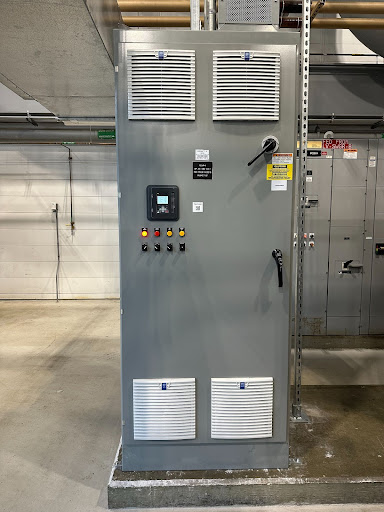Upgrades at Campus Utility Plants Drive Energy and Cost Savings

The NC State Facilities Division completed installation of three variable frequency drive (VFD) upgrades at two of five campus central utility plants that provide energy to NC State buildings.
At the Yarbrough Central Utility Plant, a VFD was installed on a condenser water pump and a chilled water pump. At the Cates Avenue Steam Plant, a VFD was installed on the condenser water pump.
These upgrades were completed through the joint efforts of Design and Construction, Utilities and Engineering and Energy Management. They are projected to save the university $40,000 per year, resulting in the upgrades paying for themselves in just over 6 years.
VFDs are used to control the operating speed and torque of electric motors. VFDs work by varying the frequency and voltage supplied to the motor, allowing it to operate at optimal speeds based on the load and requirements of the system. The installation of VFDs lead to reduced motor speeds, soft start and stop, energy optimization, energy recovery, and reduced wear and tear. This reduction in energy usage by VFDs also results in a longer life expectancy for the pumps they are controlling, lowering operating costs and maintenance. The benefits of VFD upgrades allow NC State Facilities Division teams to focus on plant optimization.
NC State Energy Management researches, evaluates and deploys energy efficiency technology to reduce energy use intensity by 40% from the 2003 baseline and water consumption by 65% from the 2002 baseline. These efforts are part of the university’s commitment to reach climate neutrality by 2050 as approximately 75% of NC State’s Raleigh campus climate footprint is due to campus energy consumption.
There are numerous opportunities for faculty, staff and students to collaborate with Energy Management and help achieve these goals. For more information, contact save-energy@ncsu.edu.